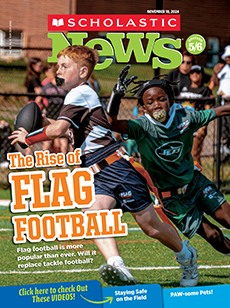1. Based on the article, what is DNA and what does it do?
The article explains that DNA is material inside cells. It determines traits that are passed down from parents, like the color of someone’s eyes and their height.
R.4 Determine Meaning
2. Summarize the main ideas of the section “Problems on the Prairie.”
The section “Problems on the Prairie” is about how black-footed ferrets nearly died out. These ferrets became endangered because farmers killed many of the prairie dogs ferrets eat and because of habitat loss and disease. Scientists thought black-footed ferrets became extinct, but in 1981 they found some and started a breeding program.
R.2 Summarize
3. Why do some scientists believe cloning black-footed ferrets can help keep the species healthy?
Many scientists believe that cloning black-footed ferrets can help keep the species healthy because most ferrets alive today are closely related. That can cause health problems. The clones, created from ferrets that lived long ago, are not as closely related. They can have babies and help introduce new DNA into the ferret population.
R.1 Text Evidence
